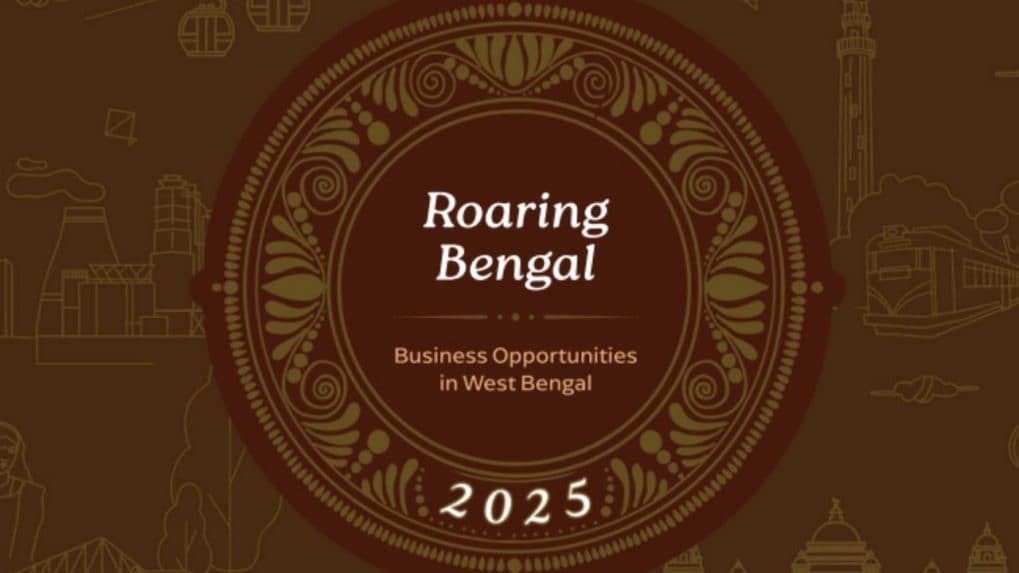Brand Makers
Dil Ka Jod Hai, Tootega Nahin

Every autumn, Bengal’s streets transform into a living canvas. From intricately designed pandals to larger-than-life idols, Durga Puja is more than just a religious celebration, it’s an economic juggernaut. According to 'Roaring Bengal' report by dentsu and The Bengal Chamber of Commerce & Industry, the festival generates an estimated Rs 32,000 crore in economic value, making it one of the world’s largest culture-led economic events.
This creative economy spans multiple sectors, from idol-making, light installations, sound engineering, and thematic architecture to fashion, food, advertising, and tourism. The festival’s recognition by UNESCO as an Intangible Cultural Heritage of Humanity in 2021 has amplified its global profile, attracting both domestic and foreign tourists. In 2024 alone, Bengal welcomed over 18.5 crore visitors, many timing their travel to coincide with Puja celebrations.
The ripple effect is immense. Thousands of artisans from rural Bengal migrate temporarily to Kolkata and other urban centres to work on pandals and idols. Hotels and restaurants report peak occupancy, while retailers and e-commerce players see a festive sales surge. The media and advertising industry also cashes in, with brands competing for high-visibility sponsorships and immersive campaigns tied to the Puja season.
More than an insight report, Roaring Bengal represents a decisive shift in dentsu’s India roadmap, placing Bengal not at the periphery, but at the core of its multi-regional ambition. By unlocking the region’s powerful mix of culture, commerce, and creativity, the report signals dentsu’s commitment to building with Bengal, for Bengal, and from Bengal.
Since 2017, Bengal has received investment proposals worth Rs. 13.55 lakh crore, underpinned by over 6,000 acres of ready industrial land and a progressive policy environment. The state is rapidly evolving into a national force across sectors such as green energy, smart infrastructure, fintech, artificial intelligence, and digital skilling - all contributing to a purpose-driven, innovation-led growth trajectory.
With a projected Gross State Domestic Product (GSDP) of Rs. 18.74 lakh crore by 2025, Bengal is among India’s fastest-growing consumer economies. The Bengal Silicon Valley is further accelerating the state’s digital economy, attracting substantial investment in future-facing technologies such as AI, IoT, and fintech.
Narayan Devanathan, President & Chief Strategy Officer, South Asia, dentsu said, “Bengal is not just part of our Bharat strategy, nor are we merely dipping our toes into the East. We are making a bold, long-term commitment. With this report and our partnership with BCC&I, we are planting our flag in a region where legacy meets leap - a centre of gravity for what is next. The Roaring Bengal Report is not commentary; it is our call to co-create Bengal’s future.”
Abheek Biswas, AVP, Consumer Insights, dentsu India added, “This is a moment of inflection. From AI clusters and clean energy investments to inclusive skilling, Bengal is building with precision and purpose. The Roaring Bengal Report does not just map this momentum. It aligns us to it, firmly and fearlessly.”
BCC&I is a long-standing catalyst for industrial growth in the region, welcomed the report’s launch. “This collaboration couldn’t have come at a better time,” said Arnab Basu, President, BCC&I.
“Bengal is building at scale, and the Roaring Bengal Report is more than insight; it is a roadmap. It equips brands to look beyond today and anticipate Bengal’s future. Dentsu India brings global scale with razor-sharp local relevance - a potent combination to deepen impact across industry, government, and civil society. Now is the time to act, and this report lights the way”, he added.
Harsha Razdan, CEO, South Asia, dentsu commented, “We will embed Eastern insights into Dentsu Lab India to shape innovation strategies at scale. We will convene co-creation workshops in Kolkata and across the state, bringing together industry leaders, policymakers, and creators to solve real-world challenges.
And we will double down on skilling and capability-building efforts to empower Bengal’s next generation to lead in technology, media, and innovation. These are not gestures or slogans. They are measurable, mission-driven commitments. With Bengal, we are not just imagining the future. We are committing to building it, together.”
Government support has further strengthened the cultural economy. Annual grants, pensions to 6,000 folk artists, and infrastructure upgrades for cultural hubs ensure the tradition’s continuity while scaling its economic potential. Platforms like Biswa Bangla connect local craft and handloom sectors to global markets, allowing the artistry born in Puja workshops to live on as exports.
But the state’s creative economy extends far beyond the ten days of Puja. Bengal has invested Rs 1,000 crore in cultural promotion, including film industry grants, infrastructure upgrades and cross-border collaborations. The Kolkata International Film Festival (KIFF) has become a global showcase for Bengali and international cinema, while support for folk art and rural culture — from Baul singers to tribal crafts — sustains livelihoods across districts.
Tourism, contributing 12.6% to the state GDP, is closely intertwined with this cultural base. Heritage circuits in Bishnupur and Murshidabad, tea tourism in Darjeeling, and experiential rural tourism hubs like Shonajhuri Haat have positioned Bengal as a year-round destination. The hospitality sector, buoyed by landmark properties such as The Oberoi Grand, ITC Sonar, and Taj Bengal, benefits from policy incentives and infrastructure upgrades, including Rs 250 crore for heritage hotel restoration.
This culture-powered economy is also a significant employment engine. Folk artists receive pensions, artisan clusters gain design and marketing support, and creative industry startups receive incubation and funding.
"The raucous, almost deafening, cuss words from the heartland that Piyush Pandey used with gay abandon turned things upside down in the old world order."
Read MoreFrom OpenAI’s ChatGPT-powered Atlas to Microsoft’s Copilot-enabled Edge, a new generation of AI-first browsers is transforming how people search, surf and interact online — and reshaping the future of digital advertising.